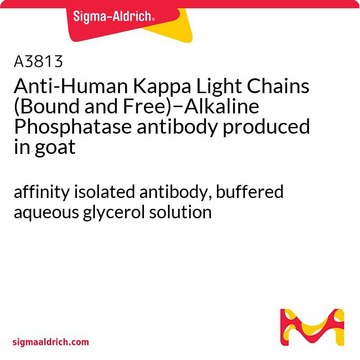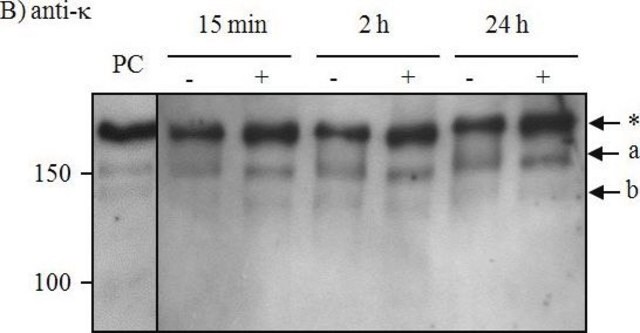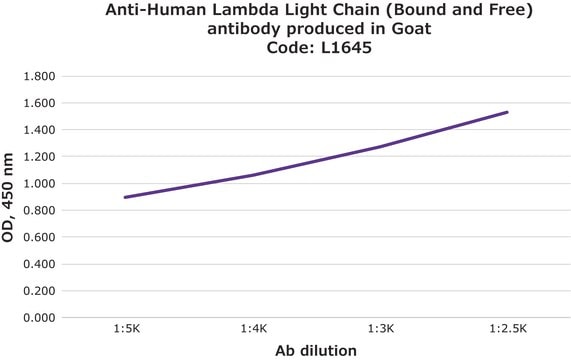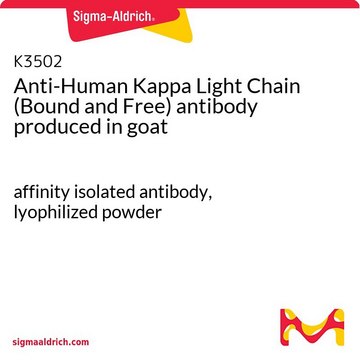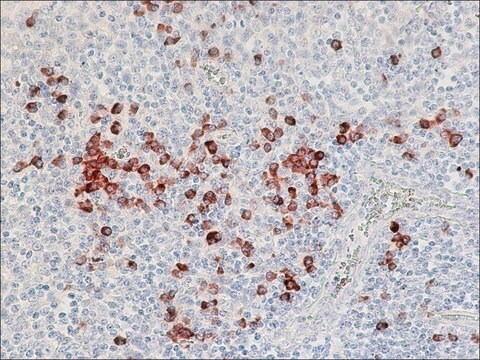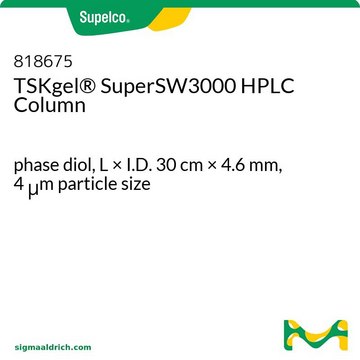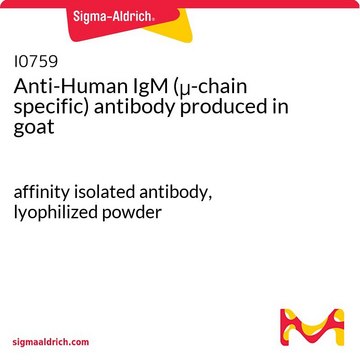A2904
Anti-Human Lambda Light Chains (Bound and Free)−Alkaline Phosphatase antibody produced in goat
affinity isolated antibody, buffered aqueous glycerol solution
Synonym(s):
Goat Anti-Human Lambda Light Chains (Bound and Free)−AP
Sign Into View Organizational & Contract Pricing
All Photos(2)
About This Item
Recommended Products
biological source
goat
conjugate
alkaline phosphatase conjugate
antibody form
affinity isolated antibody
antibody product type
secondary antibodies
clone
polyclonal
form
buffered aqueous glycerol solution
species reactivity
human
technique(s)
direct ELISA: 1:2,000-1:21,000
shipped in
wet ice
storage temp.
2-8°C
target post-translational modification
unmodified
General description
Immunoglobulins are glycoprotein antibodies that contain two equivalent light chains and a pair of identical heavy chains. Immunoglobulin light chains are the primary protein components of the amyloid fibrillar substance that is present in patients having myeloma-associated amyloidosis . Furthermore, urinary free immunoglobulin light chains can be used for the immunodiagnosis of Bence Jones proteinuria . Anti-Human λ Light Chains (Bound and Free)-Alkaline Phosphatase antibodies are specific for human λ light chains when tested against bound κ and λ proteins (human IgA, IgG, IgM) and free Bence Jones κ and λ myeloma proteins.
Mammalian immunoglobins contain either lambda or kappa light chains.
Alkaline Phosphatase is an enzyme that catalyzes the conversion of chromogenic substrates such as p-nitrophenylphosphate (PNPP); chemiluminescent substrates such as CDP-Star® and fluorogenic substrates such as 4-methylumbelliferyl phosphate (4-MUP) into detectable chromophores, light-emitters or fluorescers, respectively.
Alkaline Phosphatase is an enzyme that catalyzes the conversion of chromogenic substrates such as p-nitrophenylphosphate (PNPP); chemiluminescent substrates such as CDP-Star® and fluorogenic substrates such as 4-methylumbelliferyl phosphate (4-MUP) into detectable chromophores, light-emitters or fluorescers, respectively.
Immunogen
λ light chains isolated from Bence Jones urines
Application
Goat polyclonal anti-Human Lambda Light Chains (Bound and Free)-Alkaline Phosphatase antibody may be used to detect human lamba light chain containing immunoglobulins by chromogenic, fluorogenic, and chemiluminescent techniques. Whole cell bacterial ELISAs were performed to detect the light and heavy fragments of monoclonal antibodies against the meningococcal porA protein. The alkaline phosphatase conjugated goat anti-human λ Light Chains IgG was used as the secondary. The reaction was developed using p-nitrophenyl phosphate substrate (Sigma).
Physical form
Solution in 0.05 M Tris, pH 8.0, containing 1% bovine serum albumin, 1 mM MgCl2, 50% glycerol and 15 mM sodium azide
Legal Information
CDP-Star is a registered trademark of Tropix, Inc.
Disclaimer
Unless otherwise stated in our catalog or other company documentation accompanying the product(s), our products are intended for research use only and are not to be used for any other purpose, which includes but is not limited to, unauthorized commercial uses, in vitro diagnostic uses, ex vivo or in vivo therapeutic uses or any type of consumption or application to humans or animals.
Not finding the right product?
Try our Product Selector Tool.
Storage Class
10 - Combustible liquids
wgk_germany
WGK 2
flash_point_f
Not applicable
flash_point_c
Not applicable
Choose from one of the most recent versions:
Already Own This Product?
Find documentation for the products that you have recently purchased in the Document Library.
A Solomon et al.
The Journal of clinical investigation, 70(2), 453-460 (1982-08-01)
An antiserum prepared against a lambda-Bence Jones protein from a patient (SUT) who had multiple myeloma and amyloidosis had specificity for lambda-light chains of the chemically defined variable (V) region lambda-chain subgroup lambda VI. Sequence analyses of protein SUT and
M Weller et al.
Journal of neurology, 239(8), 455-459 (1992-10-01)
Serum IgG and IgM antibodies to gangliosides GM1, GM2, GM3, AGM1, GD1a, GD1b and GT1b were determined in 210 patients with different degenerative and inflammatory disorders including motor neuron diseases, peripheral radiculopathies and neuropathies, multiple sclerosis and neuroborreliosis. No single
Takanari Nakano et al.
Clinical chemistry and laboratory medicine, 42(4), 429-434 (2004-05-19)
The aim of this study was to evaluate the diagnostic efficacy of the ratio of urinary free light chain (FLC) kappa to lambda (kappa/lambda ratio) for the detection of Bence Jones protein (BJP). Urine specimens were collected from 243 patients
Jonas V Schaefer et al.
Protein engineering, design & selection : PEDS, 25(10), 485-506 (2012-07-06)
Recombinant antibodies and their derivatives are receiving ever increasing attention for many applications. Nevertheless, they differ widely in biophysical properties, from stable monomers to metastable aggregation-prone mixtures of oligomers. Previous work from our laboratory presented the combination of structure-based analysis
Our team of scientists has experience in all areas of research including Life Science, Material Science, Chemical Synthesis, Chromatography, Analytical and many others.
Contact Technical Service